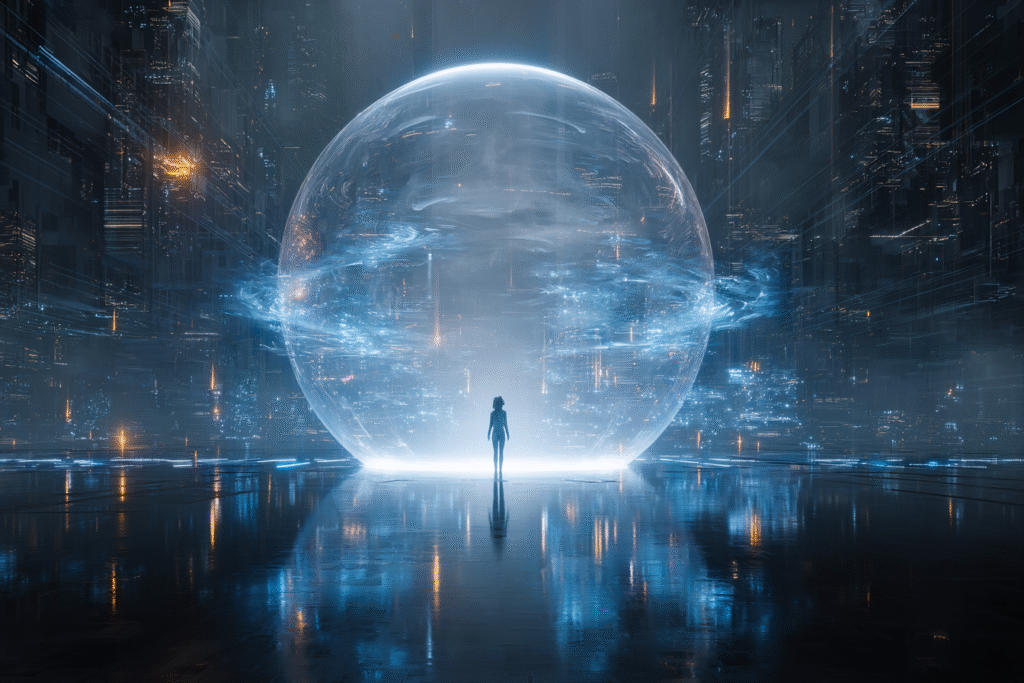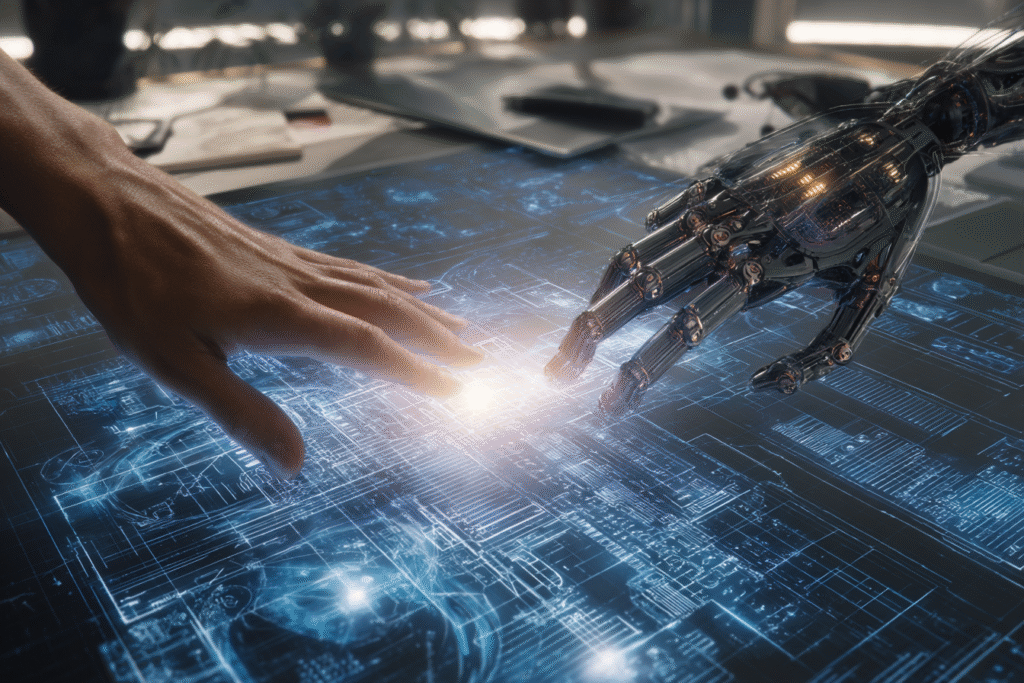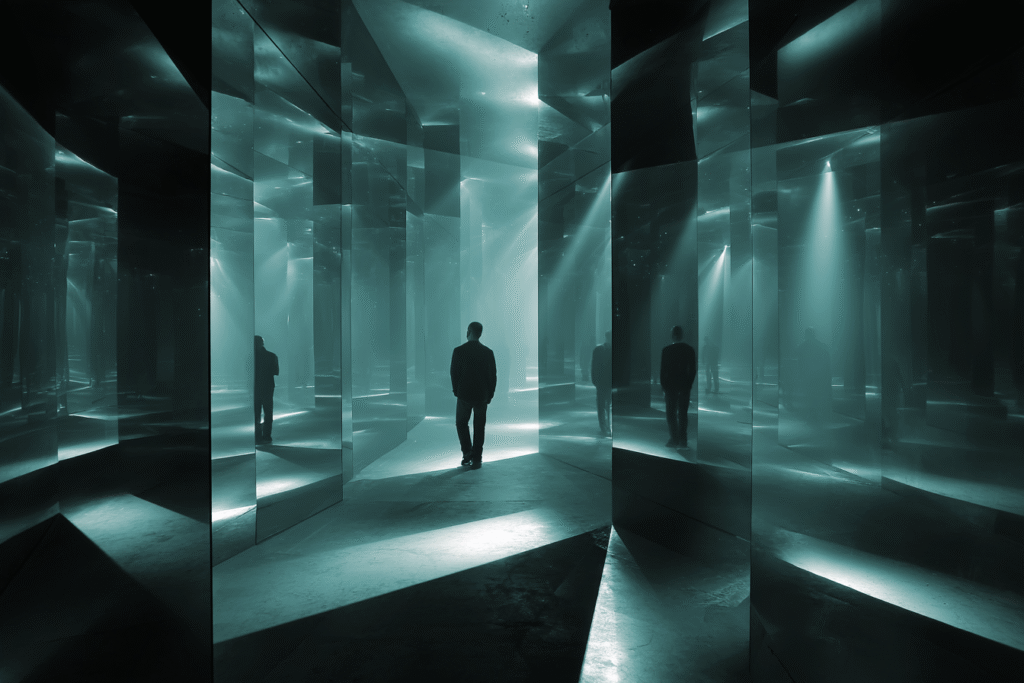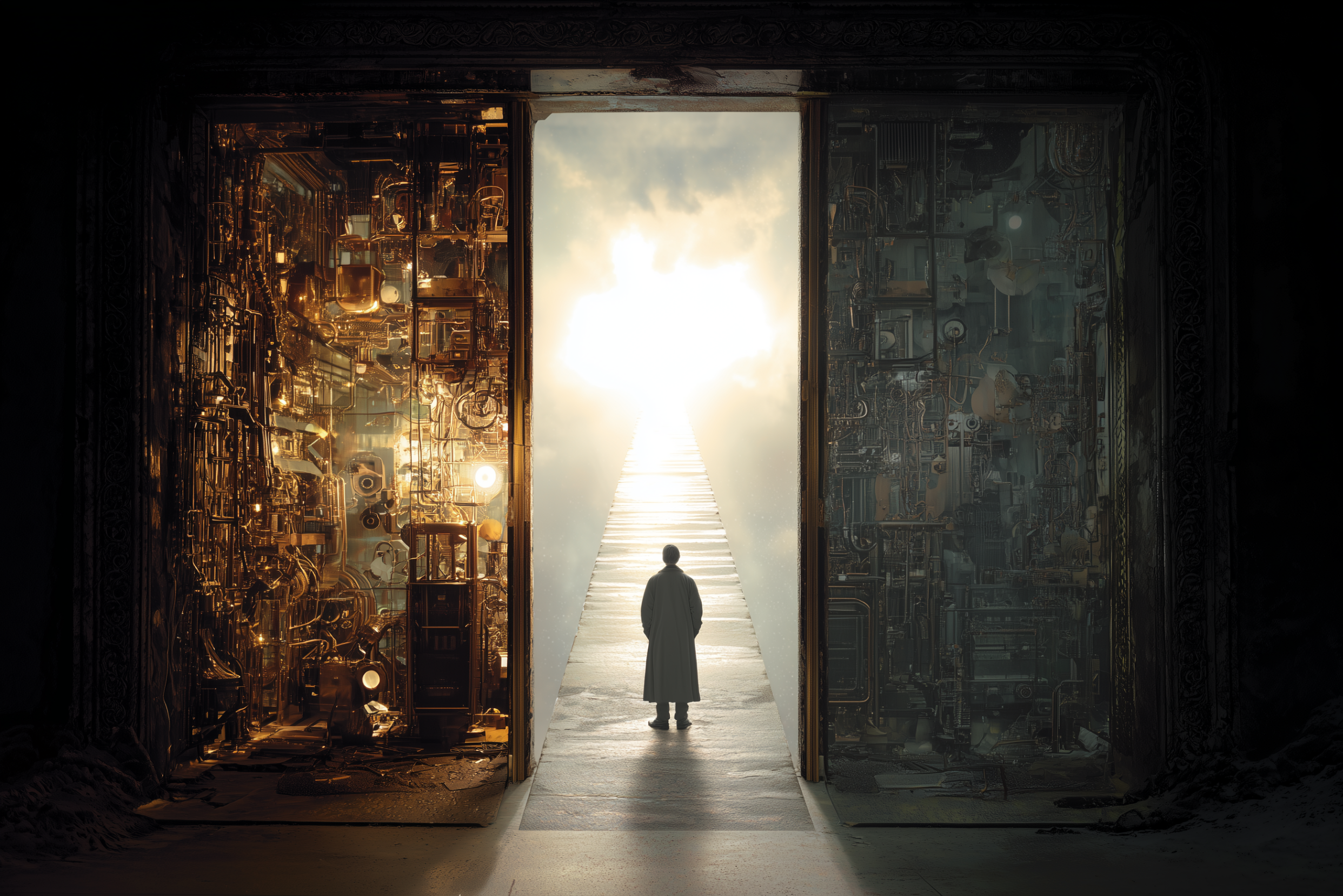We’re not being replaced by machines, we’re being displaced by uncertainty.
It’s not automation that’s coming for you.
It’s being indistinct, unanchored, and unclear.
Everywhere you turn, headlines warn of the coming wave: AI is taking jobs. Replacing creatives. Outpacing analysts. Disrupting knowledge work across every industry.
And while there’s truth to the noise, automation and disruption are happening, the machines aren’t the real threat.
The real threat is ambiguity.
In the age of artificial intelligence, it’s not the ‘less smart’ who are being displaced first, it’s often those who haven’t yet defined and expressed what makes them unique, what makes them irreplaceable.

The Real Threat: Ambiguity Over Automation
Artificial intelligence thrives in areas of predictable inputs and repeatable outputs. If your role lacks a distinct point of view, if your work could be summarized by a job description rather than a human signature, it becomes easy to automate.
But when your contribution is guided by personal insight, strategic thinking, creativity, discernment, and empathy — in other words, clarity — it becomes nearly impossible to replicate.
In today’s landscape, what makes you irreplaceable isn’t cleverness, it’s alignment, direction, and discernment.
This isn’t some fringe theory. It’s happening right now.
Real-World Signals: What Happens Without Clarity
Klarna
In 2022, Klarna, the Swedish fintech giant, laid off 700 employees, replacing their roles with an AI-powered customer service assistant developed in partnership with OpenAI. The assistant was capable of handling two-thirds of all customer interactions — tasks that previously required hundreds of full-time staff.
Fast forward to 2025, and Klarna began rehiring. Why? Because despite the efficiency gains, the AI lacked the nuanced judgment, emotional intelligence, and context awareness needed to sustain long-term customer trust. (Times of India)
What looks replaceable on a consultant’s spreadsheet often proves essential in practice, especially when human nuance is removed from the equation.

Microsoft
In early 2024, Microsoft laid off over 6,000 employees, roughly 3% of its workforce, citing a strategic pivot toward its AI-powered future. The company emphasized a leaner structure and reinvestment in AI research and product development. Most of the cuts affected middle managers and technical staff whose roles had become too generalized. (Economic Times)
This wasn’t about cost-cutting alone. It was about clarity. Roles that lacked precision, and people who couldn’t articulate their evolving value, became redundant. They became casualties of restructuring.
IBM
Meanwhile, IBM’s shift was subtler. The company quietly replaced over 30% of its HR department by automating 94% of routine tasks with AI systems. The result? Efficiency went up, headcount went down, but rather than simply shrinking, IBM redirected hiring efforts toward engineers, data scientists, and sales professionals who could operate in ambiguous environments with clarity and purpose. (Entrepreneur)
Taken together, these examples reveal something deeper:
Those who couldn’t clearly articulate their value, or evolve with purpose, became the first to go. That’s why in today’s world, clarity isn’t optional. It’s the key to staying visible, viable, and valuable in a system built on constant change.
The Clarity Imperative in the Age of AI
As artificial intelligence becomes more accessible, raw intelligence itself is being commoditized. What used to be the edge: knowing more, responding faster, calculating better, is now accessible through a browser, for free, 24 hours a day.
But abundance creates a new kind of pressure. When everything is possible, the real challenge becomes deciding what matters. That’s where discernment comes in. That’s where direction matters.
That’s where inner clarity becomes your personal operating system — helping you navigate complexity, set priorities, and act with intention.

Anchor in Purpose
The strongest edge in an AI-driven world is knowing why you’re doing any of it. Without clarity of purpose, it’s easy to become a tool operator instead of a creator. Many are now using AI to churn out content, strategies, even code, but without a core “why,” it becomes noise.
Compare two creators:
One uses GPT to mass-produce articles hoping to catch a trend. The other uses GPT to accelerate deep thinking rooted in their worldview. The difference in resonance, loyalty, and long-term value isn’t even close.
It’s not about having perfect answers, it’s about having a clear direction. Why am I doing this? Who does it serve? What future does it support?
A simple daily reflection can build this muscle:
- What do I believe in?
- What am I trying to shift in the world?
- What do I refuse to compromise on?
These aren’t always easy questions, but they cut through the noise and help guide us forward.
Own Your Edge
One of the most important questions you can ask right now is:
What do I do that AI cannot?
But don’t stop at job titles or skills. Look deeper.
AI can generate options. But it doesn’t know which one aligns with your market, your mission, your ethics, your gut. It can simulate empathy, but it doesn’t feel tension or pressure. It can summarize knowledge, but not navigate people.
The strategist who understands internal politics, or the designer who knows what not to build, brings a depth of judgment that no AI model can replicate.
If you want to find your edge, start here and try this 3-part clarity scan:
- Technical clarity: What can I do reliably?
- Human clarity: What can I sense that others overlook?
- Transformational clarity: What changes because I show up?
That third one is where irreplaceability lives.
Choose From Within
Perhaps the most overlooked, and most valuable, form of clarity in the AI age is decision clarity.

With the flood of AI-generated content, prompts, strategies, designs, code, and campaigns, the hardest thing isn’t doing — it’s choosing. Knowing what truly matters cuts through the noise, and keeps you grounded and aligned.
Before launching, shipping, or automating, ask yourself:
- Does this align with who I want to become?
- Am I choosing this from vision — or reacting from fear?
- Would I still do this if I couldn’t outsource or automate it?
Clarity helps you build from the inside out, not from the outside in.
Embracing a Clarity-Driven Future
This moment in history isn’t just a technological shift. It’s an invitation to go inward, to ask deeper questions about who we are, how we work, what we’re building, and why it matters.
AI gives us leverage. But clarity is what makes that leverage sustainable.
Let’s talk about how.

The “AI + You” Audit
One powerful exercise is to sit down and map your workflow. List out everything you do across a typical week. Then, categorize each item:
- ✅ Can AI support or accelerate this?
- ❌ Is this something only I can do well?
- ⚠️ Am I doing this by default, not design?
This isn’t about outsourcing your whole brain, it’s about protecting the parts that shouldn’t be automated. The parts where your intuition, creativity, or lived experience are the most valuable asset.
Use AI for speed. Keep clarity for direction.
Design From Identity, Not Just Ideas
Most people are still using AI to mimic what they’ve seen. But true innovation, true differentiation, comes when you use these tools to express who you are, not just what’s been done.
Instead of asking “What should I create with AI?”
Ask: “What do I want to be known for, and how can AI help me amplify that?”
The future belongs to creators and builders who know and embrace their center — and let AI extend and augment them, not replace them.
Build a Daily Clarity Ritual
You don’t have to meditate for an hour or write a novel each morning. But spend five minutes checking in with yourself before checking in with your latest tools.
Try this:
- 3 intentions for the day (What matters most?)
- 3 reflections from yesterday (What did I learn?)
- 1 word that anchors who you want to be today
That’s your North Star, the filter through which you use AI with intention, not distraction.

Final Thoughts
We’re not moving toward a future that replaces people.
But we are entering one that asks each of us to know who we are, what we bring, and to share it with clarity before the noise decides for us.
And so, the choice is yours.
Drift, and risk being swept away by the wave.
Or anchor yourself in clarity and ride it.
You don’t need to be faster, louder, or smarter than the machine.
Everyone has something to offer — but in this new era, defining it, directing it, and expressing it clearly is what makes the difference.
You just need to discover what’s already within you and share it with the world.
See you in the next insight.


